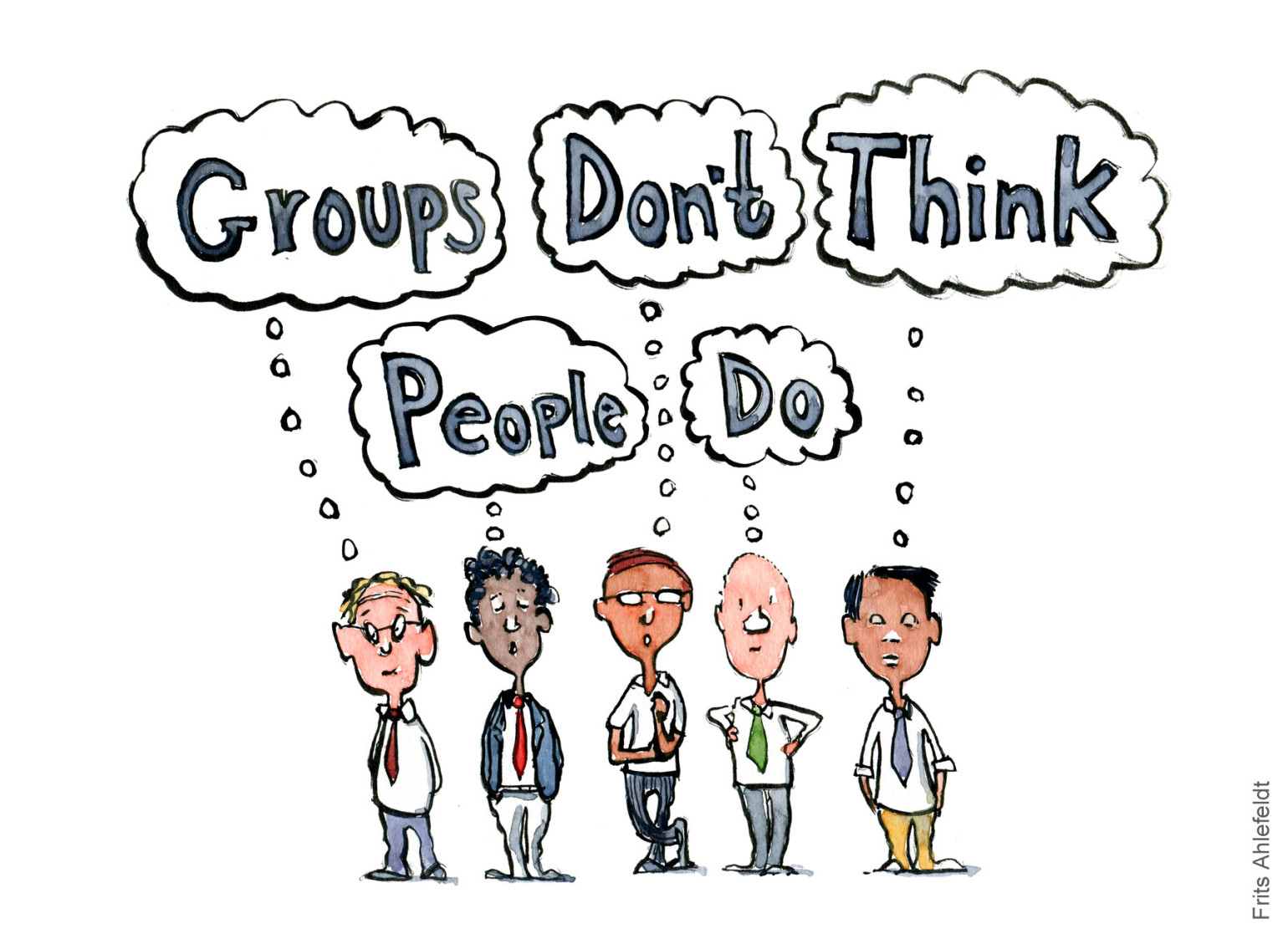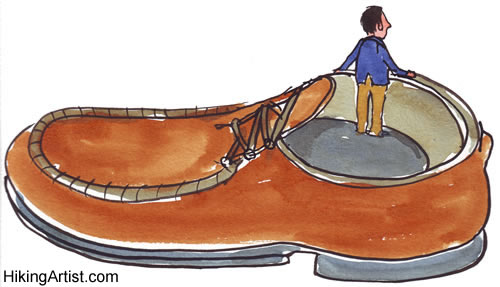|
|
|
Monday, October 29th, 2018

Poking through 11+ years of posts I find information that’s as useful now as when it was written.
Golden Oldies is a collection of the most relevant and timeless posts during that time.
Experts, Congress, pundits, media and plain people are (more or less) up in arms about the quantity, prevalence and effect of fake news. The upshot for many is the realization that the companies behind the apps can’t be trusted. In reality, they never could be, whether from carelessness, sloppy work or just not giving a damn — the “move fast and break things” attitude made popular by Facebook, and, to be fair, public apathy.
And although trust levels are at an all time low, join me Wednesday for a look at how they are still being handed the keys to the kingdom.
Read other Golden Oldies here.
When I was in college, I remember discussing a newspaper story with my aunts. I remember saying that I didn’t believe something and my aunts saying that if something wasn’t true it would not be in the paper.
They really believed that, because in the world they grew up and lived in it was mostly was true.
Fast forward to today and you find the same attitude being applied to the information supplied by the tech they use.
They don’t question the stuff supplied by various apps, especially if it’s from known vendors.
Vendors such as MaxMind.
Maxmind identifies IP addresses, matches them to a map and sells that data to advertisers.
Trouble is, accuracy isn’t their strong point.
Back in 2002, when it started in this business, Fusion reports, MaxMind made a decision. If its tech couldn’t tell where, exactly, in the US, an IP address was located, it would instead return a default set of coordinates very near the geographic center of the country — coordinates that happen to coincide with Taylor’s front yard.
Taylor is the unfortunate owner of a farm that sits on one of those catch-all co-ordinates.
And although the info isn’t supposed to be used to identify specific addresses, surprise, surprise, that’s exactly how people do use it, law enforcement included.
The farm’s 82-year-old owner, Joyce Taylor, and her tenants have been subject to FBI visits, IRS collectors, ambulances, threats, and the release of private information online, she told Fusion.
As bad as that is, at least the Taylor’s still have their home, unlike the two families who are homeless because a contractor assumed Google maps was correct, so he didn’t check the demolition addresses.
Unbelievable.
Unbelievable that they accepted the tech without checking.
Unbelievable that they first called it a minor mistake.
Unbelievable that the owners aren’t suing.
Image credit: Terry Johnston
Posted in Golden Oldies | No Comments »
Thursday, September 13th, 2018

I have been exploring a few options lately when it comes to my career. While I am not unhappy with my current role I realize that the potential elsewhere is greater.
This has led to some interesting thoughts as I look into different companies and teams. It is almost like a career day at school, you sit there to hear about different paths and imagine yourself in the role.
I read an article one time that stated its hard for a company to convey culture during the interview process, instead, they lead with salary and benefits.
This makes sense to a degree, but as a candidate, you end up dealing with asymmetric information. Sure there are sites that give job reviews but we all know that when you really dislike a job you will write a review. Lukewarm about the whole thing? Probably not writing a review one way or the other. So how can we overcome this information gap?
As I have matured a bit in my career (mature is loosely defined, by the way) I have started resorting to reaching out to a trusted friend or business acquaintance. I like to hear about their personal experiences and their viewpoints.
One way I do this is by reaching out to those I respect via LinkedIn or on the phone. I prefer hearing someone describe something and listen to their tone while they say it.
Why do I do this? If I trust someone then I feel that they will have my best interests in mind.
If I reach out to a random site online that have company reviews, then I really do not know if they have my best interests in mind. They could be bitter or they could just have an employer encouraging positive reviews.
How do you evaluate?
Image credit: Hiking Artist
Posted in Culture, Hiring, Personal Growth, Ryan's Journal | No Comments »
Wednesday, August 1st, 2018

Empowering people is something every good boss, from CEO to team leader, wants to do.
Sometimes that can be accomplished by making a small change that turns out to have a giant impact, as GM Chairman/CEO Mary Barra found when she became vice president of global human resources in 2009.
Barra wanted to change GM’s 10-page dress code to a simple, two-word one, ‘dress appropriately.’
Her staff didn’t agree.
But the HR department ironically posed my first hurdle. They started arguing with me, saying, it can be ‘dress appropriately’ on the surface, but in the employee manual it needs to be a lot more detailed. They put in specifics, like, ‘Don’t wear T-shirts that say inappropriate things, or statements that could be misinterpreted.’”
The kind of detailed instructions the hr staff wanted to add may not seem like that big a deal, but the underlying implication is that the company didn’t trust them. Remove the details and you have a radically different result.
“But if you let people own policies themselves—especially at the first level of people supervision—it helps develop them. It was an eye-opening experience, but I now know that these small little things changed our culture powerfully. They weren’t the only factor, but they contributed significantly.” (…) By simply stating “dress appropriately,” Barra does exactly what she asks of other leaders: She avoids assumptions, instead choosing to trust her employees’ judgment—and has found the experience remarkably liberating.
Not to mention successful.
If that attitude works in a company with 180,000 employees it will probably work for you.
Image credit: Wikipedia
Posted in Change, Communication, Culture, Role Models | No Comments »
Wednesday, July 11th, 2018
 A couple of months ago I wrote two posts, Ducks in a Row: Respect vs Nice and Ducks in a Row: Respect Does Not Mean Agreement. A couple of months ago I wrote two posts, Ducks in a Row: Respect vs Nice and Ducks in a Row: Respect Does Not Mean Agreement.
Yesterday I had some feedback from a senior exec who said that while he agreed in principle, he wouldn’t try to apply it to his team. He went on to say that his team was so diverse, consisting of recognized experts from different disciplines, that they had only two things in common.
The first was the size of their egos; and the second the desire to solve the problem — their way.
I asked if he had even tried any of the idea in the linked articles.
He said no; he’d been down that road in the past and the cost in time and energy was too high.
I asked if he would reconsider if I could show him a team that made his look like easy, with egos that dwarfed theirs.
He laughed and sure, so I showed him.
The team is made up of politicians from all parties, government officials, corporate CEOs, trade unionists, clergy, journalists, academics, and activists.
That got his attention, as did the task they were brought together to address, because it is not only larger, but far more intractable.
…top Mexican leaders who are working together on a project called Méxicos Posibles (Possible Mexicos) to develop solutions to their country’s daunting problems of illegality, insecurity, and inequity.
Since I knew he was listening I told him one more thing; maybe the hardest one for him to accept — that his ego was similarly sized and his own belief in his ability to make it work was no different than any member of his team.
I told him brute force wasn’t going to cut it and that he didn’t have to do it alone.
Méxicos Posibles used a consultancy led by Adam Kahane, author of Collaborating with the Enemy: How to Work with People You Don’t Agree with or Like or Trust.
I suggested he start with that book and other resources linked in my post.
I reminded him he has the stature to reach out to people like Kahane and get a response.
Hopefully I got through; I’ll know in a few weeks what direction he chooses and will let you know.
Image credit: Hiking Artist
Posted in Communication, Culture, Personal Growth | No Comments »
Friday, June 22nd, 2018

A Friday series exploring Startups and the people who make them go. Read all If the Shoe Fits posts here.
It’s almost impossible to find a company, let alone a startup, that doesn’t swear by agile product development.
But what about applying agile for to other areas, especially other human areas? Specifically, bosses.
We’ve all heard bosses at all levels blather on about creating an agile organization and being an agile leader, but seen little proof they are accomplishing it.
Ever wonder why?
To embrace agile bosses themselves often need to change.
So, while the answer is simple, implementation is not.
As Steve Denning said in 2016, Agile Is A Mindset, Not A Methodology; a few months later he did an excellent job explaining agile beyond its roots.
Consider the basic tenets of agile
- Openness. Be receptive to feedback on your own behavior and activities.
- Trust. Feel comfortable that not everything will be planned; let trial and error show the right direction.
- Collaboration. Go for the greater good of the company, which is not necessarily good for a particular unit.
- No Ego. Have everyone speak with one voice—as an organization.
- Transparency. Call out those unwilling to change or to reflect the “new world.”
- Accountability. Hold one another accountable.
Bosses whose preferred management style runs to command and control, ignore it and hide, benign neglect, or combinations thereof dictated by events are not only uncomfortable with agile, but downright resistant to it.
No one is saying that agile is perfect, but refuting the standard objections is pretty easy.
All of this is just more proof of the accuracy of my company’s tagline: To change what they do change how you think.
Image credit: HikingArtist
Posted in Communication, Culture, Personal Growth | No Comments »
Friday, January 19th, 2018

A Friday series exploring Startups and the people who make them go. Read all If the Shoe Fits posts here.
Sometimes predictions are hilarious, especially those about where technology is taking us.
It’s not that they get the tech wrong, but they often don’t factor in the minor details — such as customers.
Media is aglow with stories of how autonomous vehicles (AVs) will literally change the world beyond anything you can imagine.
In a recent survey by AAA, for example, 78% of respondents said they were afraid to ride in an AV. In a poll by insurance giant AIG, 41% didn’t want to share the road with driverless cars. And, ironically, even as companies roll out more capable semi-AVs, the public is becoming less—not more—trusting of AVs, according to surveys over the past 2 years by the Massachusetts Institute of Technology (MIT) in Cambridge and marketing firm J.D. Power and Associates.
And then there’s security.
Every time a software hack is reported, especially from a vulnerability the company knew about two years before it happened, as with Chrysler’s Jeep, or a bank, a retailer, a whatever, people grow more and more aware of just how vulnerable a software-based world that runs on online updates actually is.
Speaking at the National Governors Association meeting last year, Tesla’s Elon Musk, said, “I think one of the biggest concerns for autonomous vehicles is somebody achieving a fleet-wide hack.”
The solution?
Mr Musk insists that a kill switch “that no amount of software can override” would “ensure that you gain control of the vehicle and cut the link to the servers”,
But what does control mean to an inert lump of metal that has no gas pedal, brakes, or steering wheel?
The car would just shut down wherever it was — maybe the middle of the freeway at rush hour or a lonely mountain road during a storm.
So customer trust and security are the main obstacles to the AV/tech-enabled world companies large and small are drooling over.
Given most companies historically cavalier attitude towards security and the general distrust of auto companies in particular, the result of multiple recalls over the years, changing people’s minds won’t be easy.
And for every step forward a major hack will mean at least three steps back.
Image credit: HikingArtist
Posted in If the Shoe Fits, Innovation | No Comments »
Wednesday, November 15th, 2017
Our apologies for missed and late postings. We were still having technical issues, but they’ve all been handled. (I hope!)
 I’m ambivalent about AI. I’m ambivalent about AI.
On one hand, some of the things it can do, such as enable an iPhone to do an ultrasound scan, are amazing and encouraging.
Earlier this year, vascular surgeon John Martin was testing a pocket-sized ultrasound device developed by Butterfly Network, (…) he knew that the dark, three-centimeter mass he saw did not belong there. “I was enough of a doctor to know I was in trouble,” he says. It was squamous-cell cancer.
On the other hand, AI is full of human bias, whether intentional or not.
AI tends to be fairly unflattering to anyone with a darker skin tone, and that using AI to judge female beauty is a pretty questionable goal. (…) MakeApp’s unflattering, malfunctioning AI is the latest in a long line of AI controversies: Snapchat’s offensive Bob Marley filter, FaceApp’s “black” filters, and smartphone cameras that lighten your skin by default.
There was a time when the phrase “seeing is believing” was tightly connected to reality.
That connection became shaky with the advent of Photoshop and has been rapidly deteriorating ever since.
Enter AI in the form of the generative adversarial networks (GAN).
But images and sound recordings retain for many an inherent trustworthiness. GANs are part of a technological wave that threatens this credibility.
GANs are poised to escalate fake news, discredit evidence, legal, medical, etc., and force you to question everything — or believe blindly.
Image credit: brett jordan
Posted in Communication, Culture, Innovation | 1 Comment »
Wednesday, October 25th, 2017

Yesterday I shared a post from Wally Bock about the importance of trust — and its fragility. At the end Wally said, “Trust is one of the most valuable things you have as a leader.”
Obviously, trust is crucial in any kind of relationship, in or out of the workplace, but today I want to focus on the last word on that sentence — leader.
I’m asked all the time how to become a leader.
Degrees — MBA, PhD, MD, LLB, etc.— won’t make you a leader.
There is an entire industry — classes, coaches, books, pundits of all kinds — expounding on how to become a leader.
Many people think leadership is defined by a person’s position; after all, you hear all the time that someone was “promoted (elected/assigned) to a position of leadership.”
All well and good, but that doesn’t make them a leader.
According to the late Bill Campbell, who established a reputation as the “coach” of Silicon Valley, only one thing determines whether or not you’re a leader: the opinions of those you’re supposed to be leading.
Even having your team do what you tell them doesn’t make you a leader.
Intuit CEO Brad Smith, one of many who learned that from Campbell, says it best.
“Basically, how you make that happen is if you believe that leadership is not about putting greatness into people, leadership is about recognizing that there’s a greatness in everyone and your job is to create an environment where that greatness can emerge.”
So go ahead, term yourself a leader and even brag about your leadership skills, but at the end of the day it’s what your people say about you to their family/friends/colleagues that will confirm you as a leader — or not.
Image credit: Vic
Posted in Leadership, Personal Growth | 2 Comments »
Tuesday, October 24th, 2017
Today’s and tomorrow’s posts are follow-ups to last Monday’s, before the site was hacked.
Trust is the most important component in company culture. Without trust the culture is hollow — a sham that people will quickly see through. Trust has nothing to do with words, whether spoken or printed on a poster and hung on the wall. Wally Bock wrote what I consider the most insightful explanation of trust I’ve read, so I thought I’d share it with you. (And I highly recommend Wally’s e-book; there’s a link at the end.)
It’s also good to remember that trust doesn’t just apply to individuals, but also to entire companies. As Google is learning, losing customer trust is even more devastating and can morph into long-term consequences very quickly.
 The Burlington Industries building used to stand on a large plot of ground near where I lived in Greensboro, NC. The campus was adorned with wonderful oak trees whose thick trunks attested to how long they had been there. The Burlington Industries building used to stand on a large plot of ground near where I lived in Greensboro, NC. The campus was adorned with wonderful oak trees whose thick trunks attested to how long they had been there.
But the company came on hard times. First the building was emptied. It sat on the beautiful campus until demolition company explosions brought it down while rattling windows all around and setting the local dogs to barking.
Work crews moved in immediately. They hauled away the remains of the building. They bulldozed the area flat. And, finally, they took the trees.
One day as I drove home, I noticed that it seemed much lighter than usual. Then I realized why. In the place of old oak trees with thick trunks there were only stumps.
While many alumni of Burlington Industries loved the building, it was just an artifact. The trees were living things and when the chain saws took them, the entire area changed.
Leaders build trust slowly, through good times and bad, the way a tree grows. It happens gradually, almost imperceptibly.
But the trust built over years and decades can disappear in an instant. The chainsaws of betrayal or selfishness or greed can destroy what it took ages to grow.
Like trees, the trust your people have in you grows slowly. Despite the common phrase, you don’t build trust at all, you grow it. And you grow it slowly.
Trust grows from kept promises, from actions that demonstrate concern for your people as well as the mission, and from fairness and from consistency.
Like trees, trust is more fragile in the beginning. It takes time for the trunk to grow thick and the roots to go deep so the tree can weather big storms. But even big trees can be brought down, like those wonderful oaks on the Burlington Industries campus in Greensboro. When that happens, everything changes.
Trust is one of the most valuable things you have as a leader. Make the effort and take the time to grow it. Be wary of anything that can bring it down.
Resource
The 347 tips in my ebook can help you Become a Better Boss One Tip at a Time.
I would add that trust is one of the most valuable things you have as a human in any role.
Image credit: Wally Bock
Posted in Culture, Leadership, Personal Growth, Retention | No Comments »
Monday, October 16th, 2017
It’s amazing to me, but looking back over more than a decade of writing I find posts that still impress, with information that is as useful now as when it was written.
Golden Oldies are a collection of what I consider some of the best posts during that time.
Expediency seems to be the lens through which everything is viewed these days. Not that that’s new; this post dates to 2011 and it wasn’t new then. Flexibility is a great trait, but there are things it doesn’t enhance — such as company values. In fact, it destroys credibility, as described below.
Join me tomorrow for a great take on trust from the inimitable Wally Bock.
Read other Golden Oldies here.
 Do clichés annoy you? There’s a good reason some of the tired, old clichés stay around—namely, they work. They say what needs to be said in a way that isn’t left open to interpretation, like ‘walk your talk’ as opposed to ‘authenticity’. Do clichés annoy you? There’s a good reason some of the tired, old clichés stay around—namely, they work. They say what needs to be said in a way that isn’t left open to interpretation, like ‘walk your talk’ as opposed to ‘authenticity’.
I was reminded of this after listening recently to an entrepreneur.
Here are the salient points of the conversation,
- he had built a culture based on fairness, trust and authenticity;
- he worked hard to hire the smartest people available;
- salary and stock options were based on necessity, i.e., he did what he had to do to land the best candidates.
I asked him what would happen when people learned of the discrepancies between their package and a peer’s; that the approach seemed to fly in the face of his “fairness, trust and authenticity” statements.
He replied that
- people trusted him to do what was best for the company;
- he was fair to each person based on their individual expectations;
- any effort to implement a uniform compensation (salary and/or stock) policy would hobble his ability to hire stars; and
- it was a non-event because nobody knew anyone else’s package.
I have to admit, the naiveté of his final point cracked me up (I managed to control my hilarity).
Basically, he seems to believe that fairness, trust and authenticity have flexible meanings and that expediency trumps them all.
What do you believe?
Image credit: kevinspencer
Posted in Culture, Golden Oldies | No Comments »
|
 Subscribe to
Subscribe to
MAPping Company Success
About Miki 
Clarify your exec summary, website, etc.
Have a quick question or just want to chat? Feel free to write or call me at 360.335.8054
The 12 Ingredients of a Fillable Req
CheatSheet for InterviewERS
CheatSheet for InterviewEEs™
Give your mind a rest. Here are 4 quick ways to get rid of kinks, break a logjam or juice your creativity!
Creative mousing
Bubblewrap!
Animal innovation
Brain teaser
The latest disaster is here at home; donate to the East Coast recovery efforts now!
Text REDCROSS to 90999 to make a $10 donation or call 00.733.2767. $10 really really does make a difference and you'll never miss it.
And always donate what you can whenever you can
The following accept cash and in-kind donations: Doctors Without Borders, UNICEF, Red Cross, World Food Program, Save the Children
*/
?>About Miki
About KG
Clarify your exec summary, website, marketing collateral, etc.
Have a question or just want to chat @ no cost? Feel free to write
Download useful assistance now.
Entrepreneurs face difficulties that are hard for most people to imagine, let alone understand. You can find anonymous help and connections that do understand at 7 cups of tea.
Crises never end.
$10 really does make a difference and you’ll never miss it,
while $10 a month has exponential power.
Always donate what you can whenever you can.
The following accept cash and in-kind donations:
|







 A couple of months ago I wrote two posts,
A couple of months ago I wrote two posts, 



 The Burlington Industries building used to stand on a large plot of ground near where I lived in Greensboro, NC. The campus was adorned with wonderful oak trees whose thick trunks attested to how long they had been there.
The Burlington Industries building used to stand on a large plot of ground near where I lived in Greensboro, NC. The campus was adorned with wonderful oak trees whose thick trunks attested to how long they had been there. Do clichés annoy you? There’s a good reason some of the tired, old clichés stay around—namely, they work. They say what needs to be said in a way that isn’t left open to interpretation, like ‘walk your talk’ as opposed to ‘authenticity’.
Do clichés annoy you? There’s a good reason some of the tired, old clichés stay around—namely, they work. They say what needs to be said in a way that isn’t left open to interpretation, like ‘walk your talk’ as opposed to ‘authenticity’.
